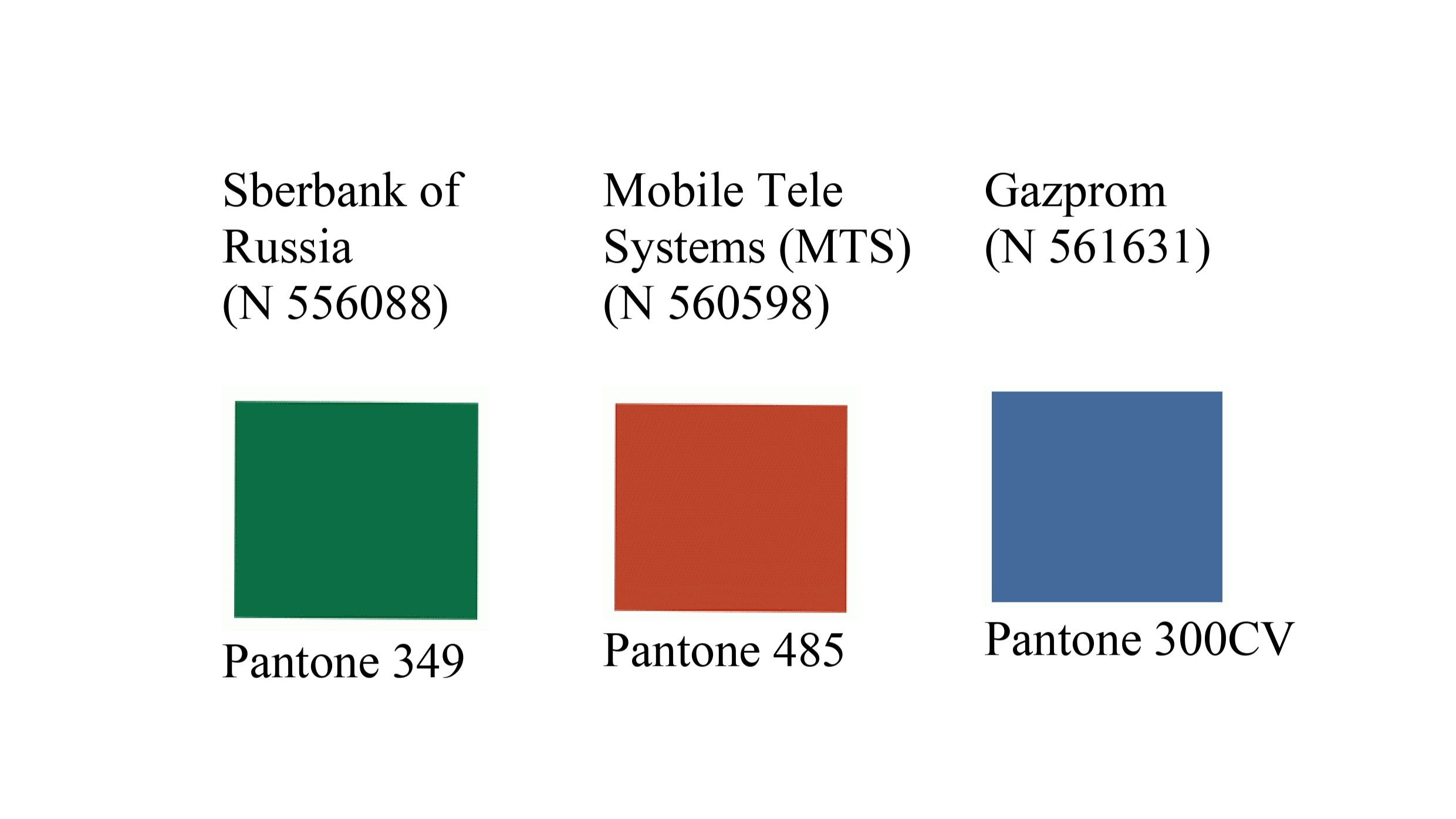Services


Trademark Search
and Clearance
Search Onlineand Clearance

Leading IP Firm
Our ratingsChange Region :UAE / SA

By virtue of Art. 1482 of the Civil Code of the Russian Federation [1], the list of types of designations that can be registered as a trademark is open. In particular, in addition to traditional verbal, pictorial, three-dimensional designations or a combination thereof, a trademark can be registered in any color or color combination.
The legislator does not directly indicate, but does not exclude the possibility of registering a color directly as a trademark. At the same time, this possibility follows from the methodological recommendations [2] of Rospatent, which provide the concept and features of registration of color trademarks.
Thus, a color trademark refers to one specific color as such or a combination of colors. In an application for registration of a color designation, the color is accompanied by a color code from an international color classification system, such as the Pantone system Matching System [3]. In this case, it should be clear that the claimed designation is precisely a color or a combination of colors, and not a figurative designation, for example, an image of a square of a certain color.
It is believed that color has a strong emotional impact on the consumer at the physiological, cultural and associative level [4]. According to marketing surveys and research, 62 - 90% of a consumer's initial judgment about a product is based on color, 52% of consumers believe that packaging color is an indicator of quality, color increases brand awareness by up to 80% [5]. In this regard, it is noted that the color of a product, packaging or material for promotion on the market, in addition to aesthetic properties, is often a decisive factor in distinguishing the goods and services of one manufacturer from another [6]. Obviously, these color properties arouse the interest of entrepreneurs in registering the corresponding non-traditional designation.
At the same time, the share of registered color trademarks in relation to traditional marks remains negligibly small. This situation is typical not only for marks registered under the international system, but also for national registration systems. For example, the number of color trademarks registered in Russia today can be counted on one hand.
In particular, the following domestic companies have a certificate of registration of a color trademark:

In addition to national organizations, foreign companies also have a certificate of registration of color trademarks in Russia. In particular, the Dutch company Reckitt Benkaiser N.V., owner of the well-known brand “Vanish” (washing powders, stain removers and bleaches). Tiffany and Company (USA), a world-famous manufacturer of jewelry, costume jewelry, etc., also has a certificate of registration of the color mark.

The insignificance of the number of registered color trademarks is due to the fact that the color designation, like most non-traditional designations, initially has a presumption of lack of distinctiveness. In practice, the procedure for registering color designations as a trademark is quite complex and takes a long time. For example, it took Sberbank of Russia PJSC about three years to register its corporate green color as a trademark.
The main feature of the registration procedure is that the applicant usually needs to prove that the color designation has acquired distinctiveness as a result of its use, and the specific color, before the date of filing the application, was perceived by the consumer as a designation intended to individualize the goods of a particular manufacturer. In this regard, it is obvious that the chance to register a color trademark directly depends on the extent of the manufacturing company’s popularity in the product market and its corporate “color style.”
First of all, the length of the registration procedure is due to the complexity of the examination, which is carried out to establish the protectability of a color designation, as well as the difficulties of proving its distinctive ability.
An approximate list of documents that can be used to establish whether a color designation has a distinctive ability is given in the methodological recommendations mentioned above. These include, in particular:
However, practice shows that even providing the entire set of these and other documents does not guarantee a positive result. For example, Rospatent refused to register the purple color Pantone 248 C [7] for the manufacturer of cat food Whiskas (Mars, Incorporated) under application No. 2016715482. The refusal was motivated by the fact that color itself does not have distinctiveness and it has not been proven that it acquired it as a result of intensive and long-term use as an independent means of individualizing the goods in question.
In addition, Rospatent noted that all the designations previously used by the applicant had, in addition to color, verbal or figurative elements used on the packaging, and that the acquired distinctiveness applies to such designations in general. The Intellectual Rights Court, in its decision dated May 21, 2019 in case No. SIP-836/2018, supported the position of Rospatent.
They refused to register the color designation and the Wildberries marketplace under application No. 2020724011 [8]. Rospatent and the Intellectual Rights Court, which supported it, in a decision dated September 15, 2022 in case No. SIP-512/2022, also pointed out the lack of proof of the distinctive ability of the declared color and noted that color is a characteristic of a certain object, and not the object itself.
Also, the Ozon marketplace (applicant: Internet Solutions LLC, application N 2023778241 [9]) applied to Rospatent for registration of a color trademark (combination of blue and pink colors).
Let's see how events develop. After all, as experts in the relevant field note, each fact of registration of a color trademark is considered unique and deserves special attention, because it can have an impact on law enforcement practice.
Sources: